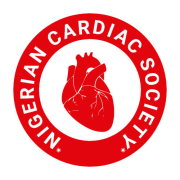

Author(s): Elkoumy A, Attia W, Fahem NA, Al-Deftar M, Ahmed TA, and Said T
Background: 2D PISA method has some technical limitations, mainly the geometric assumptions of PISA shape required to calculate effective regurgitant orifice area (EROA). Real-time three-dimensional (3D) color Doppler imaging allows measurement of PISA without geometric assumptions. The aim of this study was to validate this method in patients with chronic mitral regurgitation (MR).
Methods: 25 patients were included, ten (40%) with rheumatic MR, ten (40%) with functional MR, three (12%) with flail MV, one (4%) with MV prolapse and one (4%) with degenerative MR. EROA, regurgitant volume and regurgitant fraction were assessed using transthoracic 2D and 3D PISA methods. The quantitative Doppler EROA method and trans-thoracic VCW were used as reference methods.
Results: Both EROA and regurgitant volume assessed using the 3D PISA method had better correlations with the reference methods than conventional 2D PISA. A consistent significant underestimation of EROA and regurgitant volume using 2D PISA was observed. On the basis of the quantitative Doppler EROA method 14 patients had severe MR (EROA ≥ 0.4 cm2). Of these 14 patients, 78.5% (11 of 14) were underestimated as having non severe MR (EROA <0.4 cm2) by the 2D PISA method. In contrast, the 3D PISA method had 92.9% (13 of 14) agreement with The quantitative Doppler EROA method 14 patients had severe MR in classifying severe MR. Good intra-observer and interobserver agreement for 3D PISA measurements was observed, with intraclass correlation coefficients of 0.96 and 0.92, respectively.
Conclusion: Measurement of PISA without geometric assumptions using single-beat, real-time 3D color Doppler echocardiography is feasible in the clinical setting. MR quantification using this methodology is more accurate than the conventional 2D PISA method.